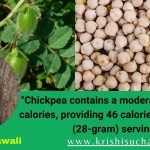Cardamom: Cultivation and Status in Nepal

Large Cardamom (Ammomum subulatum Roxburg), also known as ‘Black Cardamom’ or ‘Nepalese Cardamom’ or ‘Greater Indian cardamom’ or ‘Alainchi’ is an indigenous to moist deciduous and evergreen forests of sub Himalayan tracts. It is a high value spice crop that is grown commonly in the mid-hill districts of eastern Nepal. Large cardamom is perceived as ‘Black Gold’ (Black colour of capsule Gold = indicate its high value). Cardamom is one of the world’s most expensive spices after saffron and vanilla. About 67,000 families are directly and indirectly involved in production of large cardamom. Presently, Nepal is the largest producer of large cardamom with 68% share in the market, followed by India (22%) and Bhutan (9%). In 2018-19, Nepal produced 7,954 tonnes of large cardamom while the average annual world production of large cardamom is around 12,000 tonnes. Taplejung, Panchthar, Ilam and Sankhuwasabha are the major cardamom producing districts producing over 80% of the total national production. Among these. Taplejung is the largest large cardamom producing district having 4, 500 hectares under large cardamom plantation producing over 2,400 tonnes worth 6 billion rupees (about 57 million US dollars). Cardamom has a sweet, burning taste and a very distinctive spicy odor. Cardamom because of its variety of uses gained a reputation as the queen of spices (king, however, is black pepper). Large cardamom seeds are considered as an antidote to either snake venom of scorpion venom. It is also used as a preventive as well as curative measure for throat troubles, congestion of lungs, inflammation of eyelids, etc.
Climate and soil
Large cardamom is a perennial, shade-loving crop found at altitudes ranging from 600-2400 meters with a rainfall of 2000-4000 mm per annum. It requires a high level of humidity (>90%) and soil moisture (>70%) and, therefore, grows best in areas with ambient air temperature of 10–22ºC. Deep and well drained soils with a loamy texture are best suited for cardamom. The soil in eastern Nepal is generally rich in organic matter and nitrogen, medium in available phosphorus and medium to high in available potash. The soils have a pH range from 4.5 to 6.0.
Cultivars
There are 16 varieties of cardamom in the world. Among them, five types of large cardamom are cultivated across Nepal: Ramsey, Golsey, Sawney, Chibesey and Dammersey. According to Large Cardamom Development Center, Fikkal in Ilam, of the 14 different varieties of cardamom grown in Nepal, five varieties—Nepal Ramshai [grown at 1,500–2,000 meters above sea level], Golshai [1,200–1,600 metres], Dammershai [700–1,200 metres], Jirmale [600–1,200 metres] and Varlangae [1,500–2,000 metres]—are in the registration process.
Propagations
From seeds
One can propagate cardamom from seeds. One can try to get seeds from grocery stores, etc. but those seeds are generally treated and not fresh. For best results buy seeds from a seed store. Virus diseases are not transmitted through seeds and therefore the seedlings are free from viral disease if, adequate care is taken to isolate and protect the nursery from fresh infection. Plants raised from seeds need not necessarily be high yielders even if they are collected from very productive plants due to cross-pollination.
From Rhizomes
The easiest way to propagate cardamom is from the division. For this, cut the rhizome with a sharp knife and carefully separate it from the plant. Replant it under similar conditions. Beware that this technique will also transmit the cardamom mosaic virus from the mother plant to a new plant if it is infected.
Primary nursery
Cardamom seeds are generally sown in September-October. Seed beds are prepared in well-drained soil dug to a depth of 30 cm and left for weathering. Raised beds with 15 to 25 cm height, 1m width and convenient length, preferably 6m, are prepared. Well composted cattle manure is mixed with the soil. 80-100 gm of seeds are sown per bed in lines spaced 10 cm apart. Watering is done at regular intervals to keep the surface of the bed moist. Germination of acid treated seeds commences after 25-30 days of sowing. When the seedlings attain 3-4 leaf stage, they are transplanted to secondary beds.
Secondary Nursery
Beds of size 15 cm in height and 100 cm in width with convenient length are prepared and well-decomposed cattle manure is mixed with the soil and an even surface is formed. Seedlings with 3-4 leaves are transplanted to the beds in May-June at spacing of 15 cm between them. Soil is kept moist with irrigation. When the seedlings attain a growth of 45-60 cm in height with 2-3 tillers, they are planted in the main field during June-July of the subsequent year.
Land preparation
Sandy, loamy soil that is rich in organic matter and manure is optimal. Planting is done during June–July when there is enough moisture in the soil. The land selected for planting is cleared of all undergrowth, weeds, etc., for new planting, or if it is replanting, old plants may be removed. Pits of size 30x30x30 cm are prepared on the contour of the hill at a spacing of 1.5 x 1.5 m after the onset of monsoon showers. A wider spacing of 1.8×1.8 m is recommended for robust cultivars like Sawney, Varlangey, Ramsey, etc. Seedlings/suckers are planted in the middle of the pit. After planting the seedling/suckers may be staked and the base of the plant is mulched with dry leaves.
Manuring
Well composted cattle manure or compost and oil cakes may be applied at the rate of 2 kg per plant at least once in two years in April–May.
Weeding
Three rounds of weeding are required for effective control of the weed growth in the initial two to three years. Weeding can either be hand weeding or sickle weeding depending upon the intensity of weed growth.
Irrigation
In some of the large cardamom plantations, water sources are available which can be exploited to irrigate the crop by gravity flow, either through pipes or flood irrigation through open channels. It is observed that productivity is higher in plantations where irrigation is provided. For sustainable and better yield the plants may be watered during the dry months. Hose irrigation can be done at the rate of 40-50 litres per plant at fortnightly intervals.
Fertilizer
Supply organic fertilizer that is high in phosphorus. Apply it twice a month during the growing season. Also, apply 5 kg aged manure or compost per clump annually. Application of neem cake is also recommended.
Pest and diseases
1. Leaf eating caterpillar
Initially the caterpillar of the moth Artona chorista feeds on the leaf lamina from under the surface of the leaf. Their incidence is noticed in May-July and October-March. The best method of control is to inspect the plantations during May-July and October-March, to handpick the infected leaves along with the caterpillars and destroy them by burning.
2. Diseases
Fungal or bacterial diseases are seldom reported in large cardamoms. Only minor diseases like leaf streak or rot diseases are found in isolated areas.
- Chirke: mosaic appearance on the tender leaves with pale streaks, which slowly turns into brown, resulting in withering and drying of the plants. It is transmitted by aphids.
- Foorkey: Numerous small tillers appear at the base of the affected plants.
Management of viral diseases
- Keep a constant vigil to detect disease affected parts.
- Uproot and destroy affected plants as soon as symptoms appear.
- Use seedlings produced in certified nurseries.
- Propagation through suckers is recommended only through certified multiplication nurseries.
Harvesting and Packaging
The indication of the time of harvest is when the seeds of the topmost capsules turn brown. To enhance maturity, bearing tillers are cut to a height of 30-45 cm and left for another 10-15 days for full maturity. The spikes are harvested using special knives. The harvested spikes are heaped and capsules are separated and dried.
The properly dried capsules should be allowed to cool and then packed in polythene lined jute bags. The bags may be stored on a wooden platform to avoid absorption of moisture, which may result in fungus growth damaging the stored produce.

 दिल्लीको होटलमा बसेर क्यानडा र अमेरिकामा मानव तस्करी
दिल्लीको होटलमा बसेर क्यानडा र अमेरिकामा मानव तस्करी  अनलाइन जुवा खेलाएर काभ्रेका अनिलले गरे दुई अर्बको कारोबार
अनलाइन जुवा खेलाएर काभ्रेका अनिलले गरे दुई अर्बको कारोबार  मुख्यमन्त्री सोडारीले विश्वासको मत लिन सुदूरपश्चिमको प्रदेश सभा बैठक आव्हान
मुख्यमन्त्री सोडारीले विश्वासको मत लिन सुदूरपश्चिमको प्रदेश सभा बैठक आव्हान  अफगानिस्तानमा बाढीबाट ३१५ भन्दा बढीको मृत्यु
अफगानिस्तानमा बाढीबाट ३१५ भन्दा बढीको मृत्यु  सुँगुरको मिर्गौला प्रत्यारोपण गरिएका रिचर्डको निधन
सुँगुरको मिर्गौला प्रत्यारोपण गरिएका रिचर्डको निधन 


